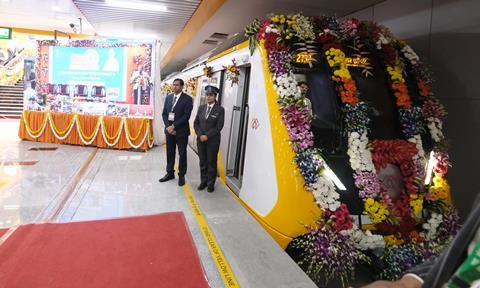
INDIA: Prime Minister Narendra Modi inaugurated the first section of the Agra metro by teleconference on March 6, with passenger services starting at 06.00 the following day.
The cabinet approved plans for the two-line Agra metro network in 2019, and construction was formally launched in December 2020.
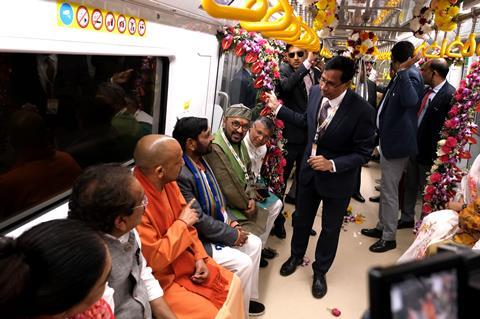
The initial section of the Yellow Line runs 5·3 km from Taj East Gate to Mankameshwar Mandir with three underground and three elevated stations.
A further 8 km is under construction to extend the line from Mankameshwar Mandir to Sikandara in the northwest.
The second line will be the 15·4 km Blue Line, which will run from Agra Cantt in the south to Kalindi Vihar in the north on an elevated alignment with 14 stations.
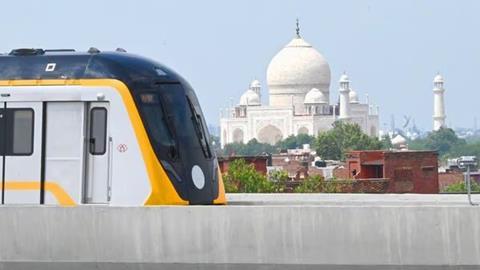
‘The metro promises to be a game-changer for Agra as it will enhance tourism by providing a sustainable and efficient mode of transportation to visit the city’s cultural treasures, including the iconic Taj Mahal’, said Olivier Loison, Managing Director of Alstom India. ‘It will also prove to be a boon for residents as it will offer improved connectivity, reduced travel time and a modern mobility service.’
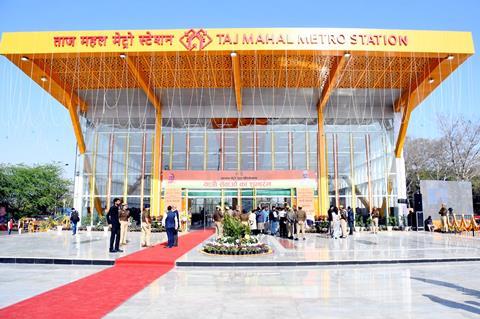
Uttar Pradesh Metro Rail Corp awarded Bombardier Transportation — now Alstom — a €245m contract in 2020 to supply 28 three-car trainsets for Agra and 39 for Kanpur along with Cityflo 650 communications-based train control.
The orders were combined with the aim of replicating the rapid timescale of Lucknow metro Phase 1A, which UPMRC described as the fastest metro implementation in India at the time.
Alstom said the use of the same design of trainset reduced the time needed for commissioning the Agra trains by almost a year.
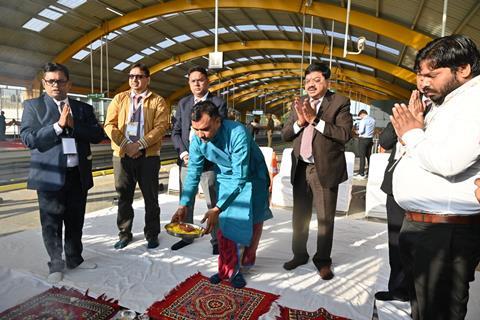
The stainless steel Movia trainsets were designed at Alstom’s engineering centre in Hyderabad and manufactured in Savli. Each three-car set has a capacity of 960 passengers. They have Flexx metro bogies and Mitrac traction equipment, with a maximum speed of 90 km/h and operating speed of 80 km/h. The interiors include passenger information systems, areas for passengers with reduced mobility and air-conditioning which adjusts to the loading by measuring CO2 levels inside the vehicles.
The Cityflo 650 signalling was developed in Gurgaon and Bangkok.
Larsen & Toubro supplied the 750 V DC third rail electrification equipment.

















